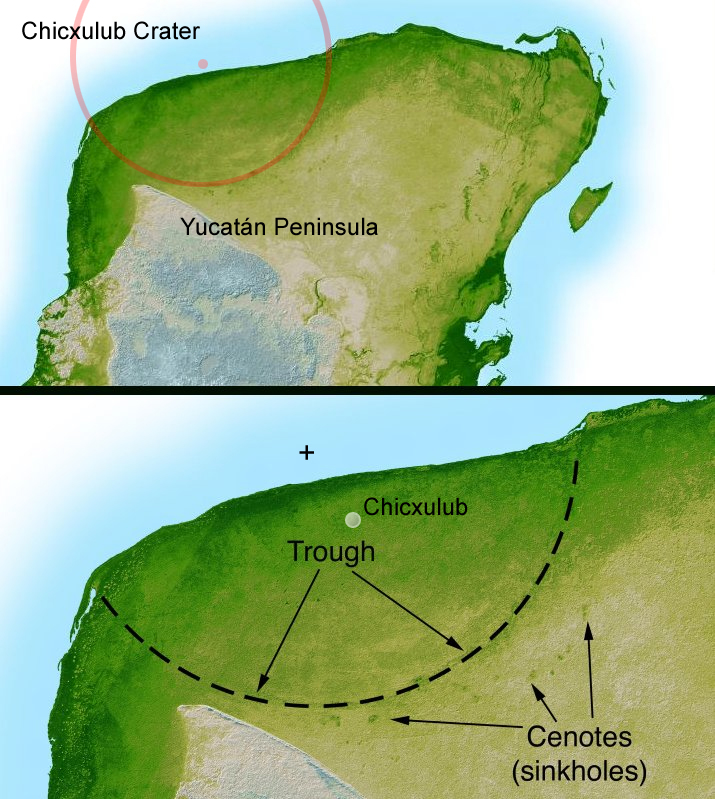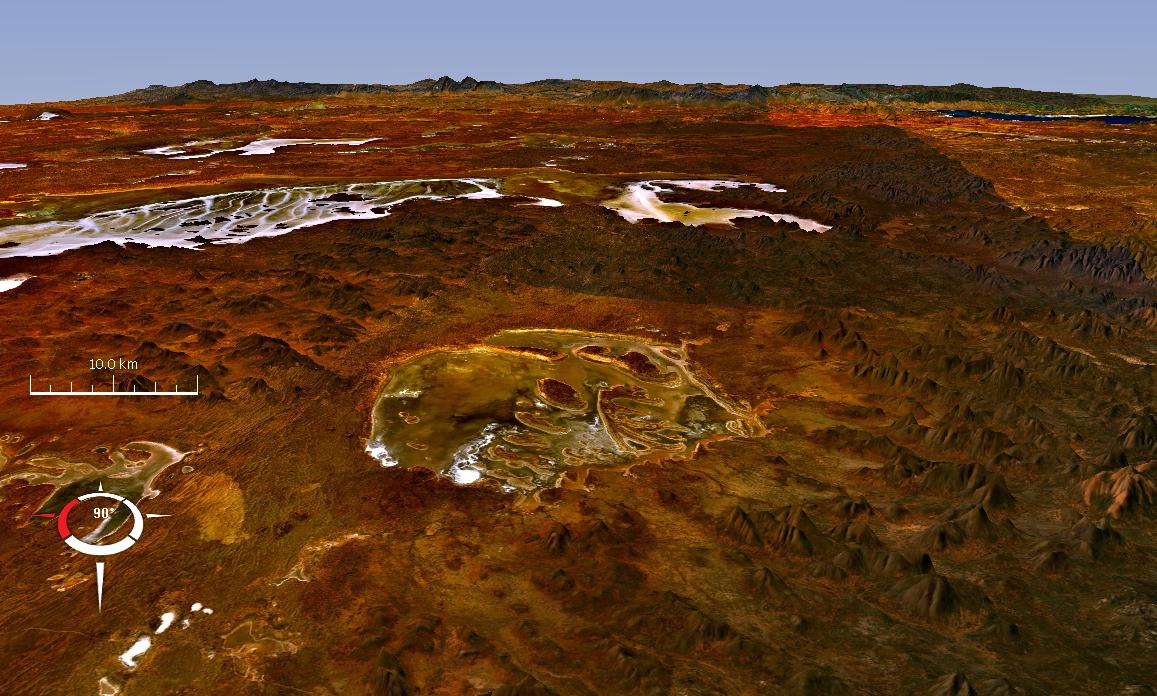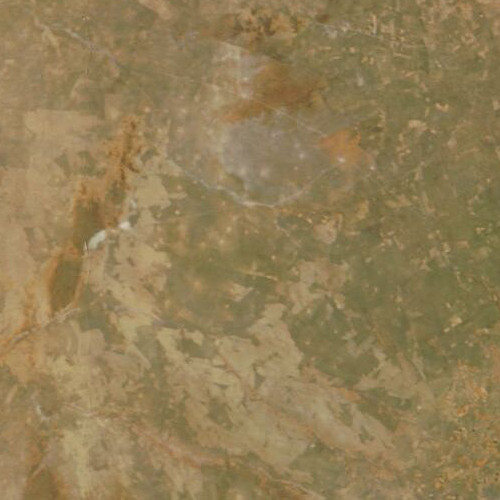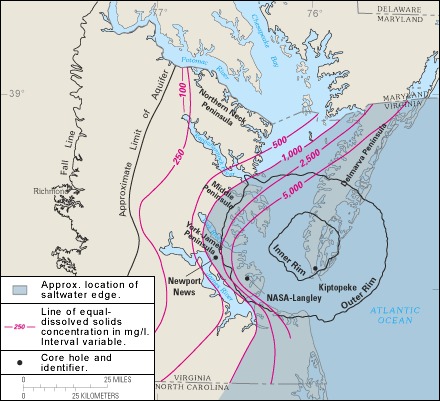When you look up at the night sky, it’s hard to imagine that our planet has been the target of countless cosmic projectiles over billions of years. These celestial visitors haven’t been gentle guests. Throughout Earth’s tumultuous history, massive asteroids and comets have slammed into our planet with devastating force, leaving behind scars that tell extraordinary tales of destruction and transformation.
The evidence of these ancient impacts surrounds us everywhere, though most people walk right past it without realizing what they’re seeing. From the precious metals we mine to the very extinction events that shaped life on Earth, these cosmic collisions have fundamentally altered our planet’s destiny. Let’s dive into the stories behind the most colossal impacts our world has ever witnessed.
Vredefort Impact Structure – The Ultimate Cosmic Catastrophe

Picture an asteroid larger than Mount Everest hurtling toward Earth at unimaginable speeds. That’s essentially what happened over two billion years ago in what is now South Africa.
The Vredefort impact structure is one of the largest impact structures on Earth. The crater, which has since been eroded away, has been estimated at 170–300 kilometres (110–190 mi) across when it was formed, the latter estimate suggesting the initial crater was larger than Chicxulub crater. It is believed that the asteroid that struck Vredefort was one of the largest ever to hit Earth (at least since the Hadean Eon about four billion years ago), thought to be about 10–15 km in diameter.
The impact was so violent that it turned solid rock layers upside down and inside out. According to Gibson, the uplift at the center of the impact was so strong that a 25-kilometer section of Earth’s crust was turned on end. The various layers of upturned rock eroded at different rates and produced the concentric pattern still visible today. The outer part of Mountainland has exposed rocks that are roughly 2.8 billion years old; this is the Central Rand Group, source of more than one-third of all gold mined on Earth.
Sudbury Basin – The Nickel Giant

Imagine a cosmic impact so powerful that it created one of the world’s most valuable mining regions. Sudbury Basin is among the largest-known craters on Earth, after the 300-kilometre (190 mi) diameter Vredefort impact structure in South Africa, and the 180-kilometre (110 mi) diameter Chicxulub crater under Yucatán, Mexico.
The structure, the eroded remnant of an impact crater, was formed by the impact of an asteroid 1.849 billion years ago in the Paleoproterozoic era. What makes this crater truly remarkable isn’t just its size but what it left behind. The ores of the Sudbury Basin are known to contain nickel, copper, gold, silver, platinum, palladium, rhodium, iridium, and ruthenium.
The Sudbury Basin alone has produced more nickel than any other location on Earth, making it one of the most economically significant geological formations on the planet. The city of Greater Sudbury owes its entire existence to this ancient catastrophe. The full extent of the Sudbury Basin is 62 km (39 mi) long, 30 km (19 mi) wide, and 15 km (9.3 mi) deep, although the modern ground surface is much shallower.
Chicxulub Crater – The Dinosaur Killer

This is the impact that changed everything you thought you knew about extinction events. It was formed slightly over 66 million years ago when an asteroid, about ten kilometers (six miles) in diameter, struck Earth.
The crater is estimated to be 180 kilometers (110 miles) in diameter and 20 kilometers (12 miles) in depth. What makes Chicxulub truly terrifying isn’t just its size but its timing. The extinction of the dinosaurs and around three-quarters of all living species was almost certainly caused by a large asteroid impact 66 million years ago.
Beyond the immediate destruction, the impact blanketed Earth with thick clouds of sulfur, soot and dust, blocking sunlight from reaching its surface. This plunged the planet into monthslong darkness and ground photosynthesis to a halt, disrupting the food chain that ultimately triggered the mass extinction of the dinosaurs and many other species. The crater remains largely buried beneath the Yucatan Peninsula, making it one of the most studied yet hidden geological features on our planet.
Popigai Crater – The Diamond Factory

When you think of diamonds, you probably picture elegant jewelry or industrial tools. You might not imagine them being created by cosmic violence. Around 35 million years ago, a 5-mile-wide (8 km) stony asteroid crashed into carbon-rich graphite rock in Russia’s Siberia, creating a 62-mile-wide (100 km) crater.
It was discovered that the shock pressure from the initial impact instantaneously turned graphite all along the ground, within a 13.6km (8.4mi) diameter of the impact site, into diamonds. The immense temperature and pressure caused the humble graphite we know from grammar school pencils to become diamonds.
Because of the presence of diamonds, the Popigai Crater was off-limits to geologists until 1997. The Popigai diamonds are small, about 1 mm in size, dark colored, and are used in industrial applications. Russian scientists claim that this crater site contains trillions of carats of diamonds, making it one of the largest diamond deposits in the world.
Manicouagan Crater – The Eye of Quebec

From space, this crater looks like a giant eye staring up from the Canadian wilderness. Known as the “Eye of Quebec”, Manicouagan is a 100 km (62 mi) wide annular lake in Quebec, Canada. The crater has been heavily eroded, but a 70 km (43 mi) diameter inner ring is still visible from space.
The structure is approximately 214 million years old. The impactor is estimated to have been 5 km wide. What makes Manicouagan particularly fascinating is its preservation. The inner island called René-Levasseur Island, is actually the central peak of the crater, formed by post-impact uplift.
Scientists David Rowley of the University of Chicago, John Spray of the University of New Brunswick, and Simon Kelley of the Open University have posited that Manicouagan is part of a multiple impact event that also formed the Rochechouart crater in France, Saint Martin crater in Manitoba, Obolon crater in Ukraine, and Red Wing crater in North Dakota. The five craters appear to form a chain, which indicates the breakup and subsequent impact of an asteroid or comet. This is similar to the string of impacts made on Jupiter by Comet Shoemaker–Levy 9 in 1994.
Acraman Crater – Australia’s Ancient Scar

Hidden beneath the waters of South Australia lies evidence of one of Earth’s most ancient catastrophes. South Australia’s Acraman crater is 90 km (56 mi) in diameter and 580 million years old. The structure is so heavily eroded that little of the original crater morphology remains.
Lake Acraman fills a 20 km wide depression at the center. Evidence for the Acraman impact comes from the presence of shatter cones and impact melt rocks. What’s remarkable about Acraman is how far its influence spread. Ejecta from the crater has been found over 300 km away in the Flinders Ranges, where it is associated with some of the earliest known animal fossils.
The impactor was likely 4-5 km in size. It struck an area of folded sedimentary rocks, vaporizing a huge volume of material. The timing of this impact coincides with a crucial period in Earth’s history when complex life was just beginning to emerge.
Morokweng Crater – The Hidden Treasure

Sometimes the most incredible discoveries happen when you least expect them. Scientists drilling into what they thought was just another impact crater got the surprise of their careers. Morokweng is a deeply eroded impact structure in South Africa’s Kalahari Desert. The visible crater has a diameter of 70 km (43 mi), but it may have originally been around 140 km (87 mi) wide.
In the 1990s, a scientific drilling project into the crater’s central uplift brought up a surprising find – fragments of the actual meteorite. Analysis showed it was an ordinary chondrite, the most common class of stony meteorite. It is very rare for pieces of the impactor to be preserved in large craters.
In 2006, a group of scientists drilling into the site discovered a 25cm (9.8in) diameter fragment of the original asteroid, at a depth of about 770m (842yards) below the surface. This discovery was very unusual, as drilling on large impact structures had never produced such fragments, and it had previously been believed that all large asteroids vaporized almost entirely on impact. The age is estimated at 145 million years old.
Chesapeake Bay Crater – America’s Underwater Giant

You might swim in Chesapeake Bay without ever realizing you’re floating above one of North America’s most significant impact craters. The Chesapeake Bay Crater lies buried beneath the eastern coast of the United States in Virginia. It spans approximately 85 kilometers and is estimated to be around 35 million years old. Created by a high-speed asteroid impact, this crater left its mark deep below sea level.
The bottom of the crater is 40 km in diameter, but the entire structure is 85 km in diameter, situated at a depth of 1 km. It is one of the best-preserved “wet-target” impact craters in the world. What makes this crater particularly interesting is how it was discovered. Scientists discovered it in the 1980s while researching freshwater contamination in the area.
The impact fundamentally shaped the geography of the region, creating the distinctive features that would eventually become one of America’s most important waterways. The build-up of sediments over the rubble of the crater has formed Chesapeake bay as it is known today.
Kara Crater – Russia’s Eroded Mystery

Time has not been kind to the Kara Crater, but what remains still tells an incredible story of cosmic violence. Kara crater is a 70.3-million-year-old eroded crater exposed in Russia’s Yugorsky Peninsula. Researchers think the 40-mile-wide (65 km) crater was once more than 75 miles (120 km) in diameter.
At the southeastern end of the Yugorsky Peninsula lies the Kara Crater. Today, it is 40 miles (65 km) in diameter but is thought to have originally been 75 miles (120 km) in size. Whatever created the crater crashed into Earth 70 million years ago. The timing places this impact very close to the end of the dinosaur era, though it likely wasn’t responsible for their extinction.
Now greatly eroded, the Kara crater is a non-exposed impact structure in Russia. Some have claimed that the impact structure actually consists of two adjacent craters: the Kara and the Ust-Kara crater. This suggests the possibility of a multiple impact event, where a single asteroid broke apart before striking Earth.
Puchezh-Katunki Crater – The Jurassic Impact

Deep in Russia lies evidence of an impact that occurred during one of Earth’s most fascinating periods. Puchezh-Katunki is a meteor crater in the Chkalousky District, in Russia. The crater is 80km (49.7mi) in diameter and is an estimated 167 million years old, placing it in the Jurassic era.
This impact occurred during the height of the dinosaur age, when massive sauropods roamed the Earth and the first birds were taking to the skies. The crater represents a significant cosmic interruption during this golden age of reptilian dominance. While not as large as some of the other craters on our list, its timing makes it particularly intriguing to paleontologists and geologists alike.
The Jurassic period was already a time of dramatic geological and biological change, and this impact would have added another layer of disruption to an already dynamic world. Though we can only speculate about the immediate effects, any impact of this magnitude would have caused significant regional devastation and potentially influenced climate patterns across the globe.
These cosmic catastrophes remind us that our planet exists in a dangerous neighborhood. Each crater represents a moment when the universe reminded Earth just how small and vulnerable it really is. Yet paradoxically, these same impacts may have been crucial for life’s development, delivering essential elements and creating conditions that allowed evolution to take new and unexpected turns.
The scars from these ancient collisions continue to shape our world today, from the precious metals we depend on to the very landscapes we call home. They serve as both warnings and wonders, testament to the incredible forces that have molded our planet over billions of years.
What fascinates you most about these cosmic time capsules? The sheer scale of destruction, or perhaps how life managed to bounce back every single time?

Hi, I’m Andrew, and I come from India. Experienced content specialist with a passion for writing. My forte includes health and wellness, Travel, Animals, and Nature. A nature nomad, I am obsessed with mountains and love high-altitude trekking. I have been on several Himalayan treks in India including the Everest Base Camp in Nepal, a profound experience.




